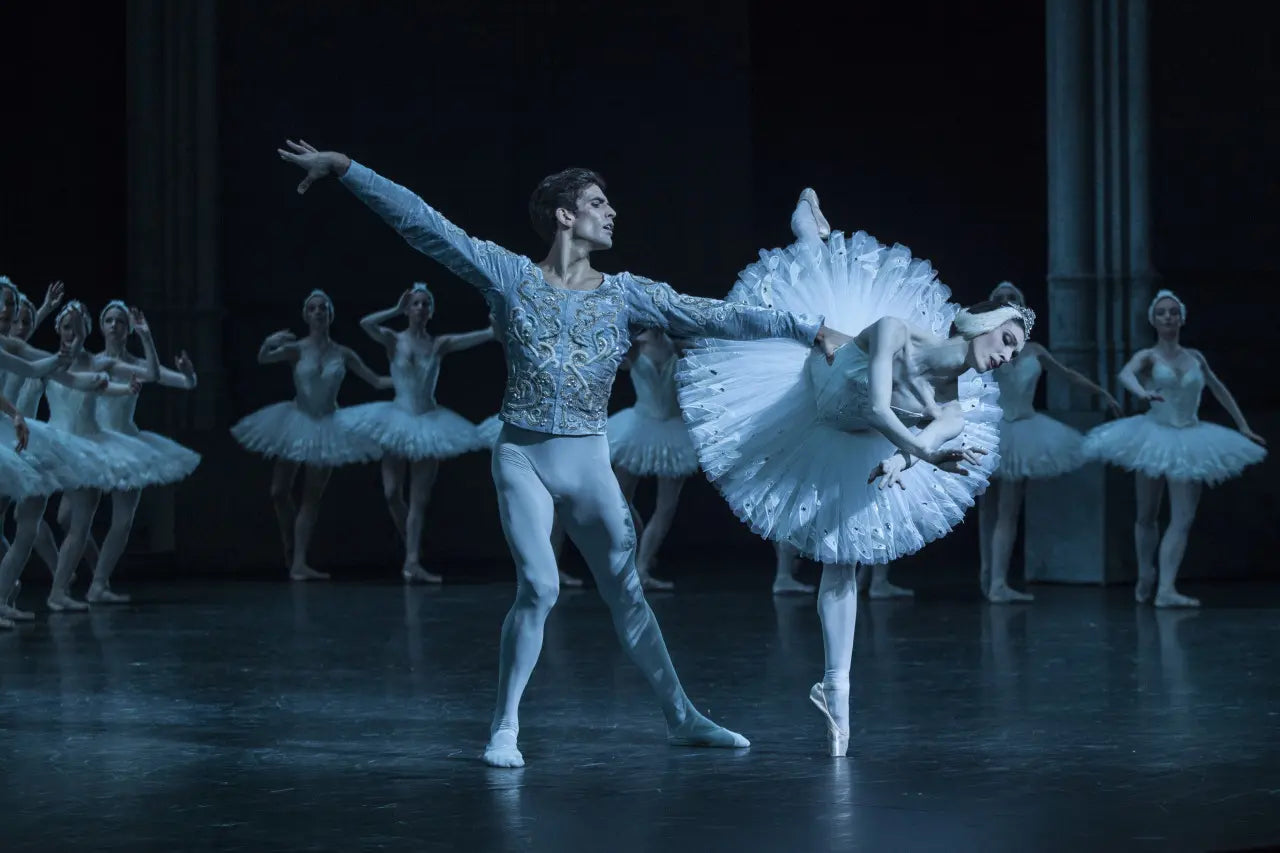Spellbound
Two performers crawl in on hands and knees wearing neon green, hooded coveralls—the lightweight papery kind made for working in a sterile environment—and clusters of balloons pinned to their backs.
Plus
World-class review of ballet and dance.
Nureyev’s take on “Swan Lake” (1984) is often said to be tricky, narcissist, untidy. It is all that, to some extent, but it’s also one of the most mature, intense versions of the crowd-pleaser that has gone free from emotional stirring around the world. In Nureyev’s version, the psychological depth, ingrained in the Prince’s psyche, is reminiscent of the choreographer’s dark side. And when you watch men waltzing holding hands like women traditionally do in Romantic ballets, it feels close to what could have been in Tchaikovsky’s imagination. Part of his sorrow came from his attraction to men, which he had to repress because of “good morals.” The haunting pain of his occasionally bursts from the music and all of a sudden everything makes sense; that Siegfried is as torn apart as the choreographer and the composer were. Call it extrapolation, but there’s a reference, maybe, to Ludwig II’s tragic fate, as Neumeier later emphasized it. No matter what actually crossed Nureyev’s mind when he poured his thoughts into his masterpiece, the male hero is clearly not just another foil to the Swan Queen. And that’s why the “Swan Lake” which landed at the Paris Opera Ballet in 1984 is worth watching once in a lifetime, regardless of its imperfections.
Performance
Place
Words

Laura Hecquet and Audric Bezard in Nureyev's "Swan Lake." Photograph by Ann Ray


“Uncommonly intelligent, substantial coverage.”
Your weekly source for world-class dance reviews, interviews, articles, and more.
Already a paid subscriber? Login
Two performers crawl in on hands and knees wearing neon green, hooded coveralls—the lightweight papery kind made for working in a sterile environment—and clusters of balloons pinned to their backs.
PlusWill Rawls makes boundaries visible by defying them. Known for the disciplinary and topical range of his projects, the choreographer, director, and performer approaches issues of representation in “[siccer],” a multi-part, multi-site work co-presented by L’Alliance New York’s Crossing the Line Festival. A live performance at Performance Space New York accompanies a multimedia installation at the Kitchen, a book published by Wendy’s Subway, and an album published by the artist. With a creative process reaching back to 2018, the work delves explicitly into pandemic-era energies and inertias with focused intimacy and a pervasive sense of instability.
PlusIt is always interesting when multiple theme steps emerge over the course of a mixed repertory evening, but it is uncanny on one featuring five different ballets, each with a different choreographer and composer, covering a twenty-year span (2005-2025).
PlusZvidance premiered its new work “Dandelion” mid-November at New York Live Arts. Founded by Zvi Gotheiner in 1989, Zvidance has been a steady presence in the New York contemporary dance scene, a reliable source of compositional integrity, and a magnet for wonderful dancers.
Plus
comments